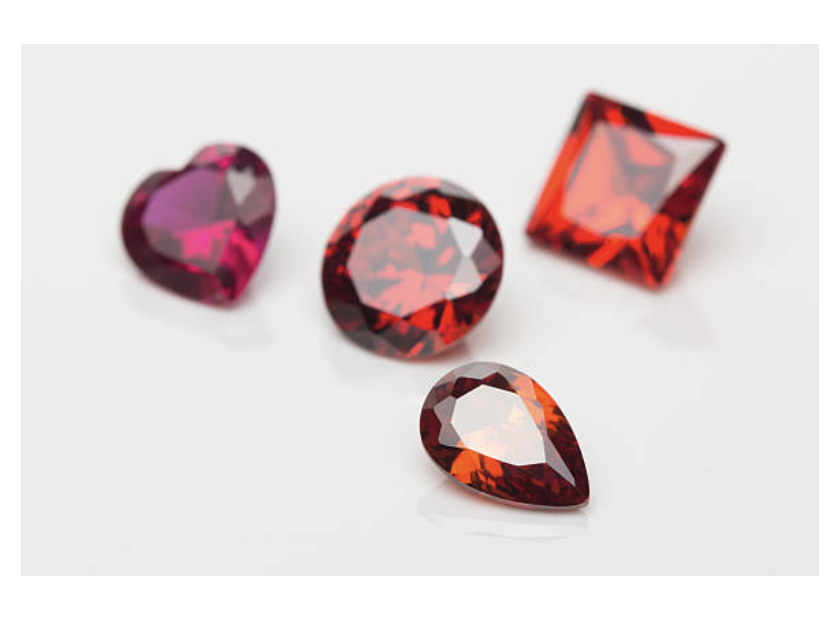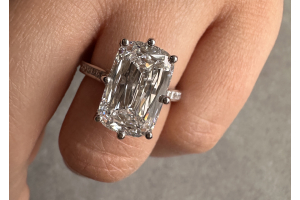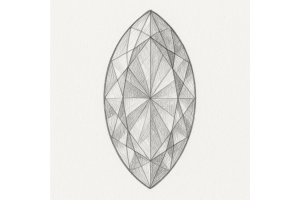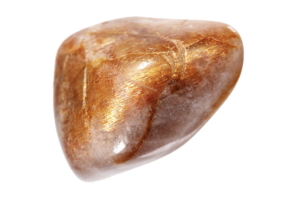GBP
/
GBP
/
Shipping to:
Currency:
What Is the Difference Between Garnet and Ruby? A Complete Guide for Gemstone Lovers
When it comes to red gemstones, garnet and ruby often steal the spotlight.
At a glance, they might seem quite similar, but delve a little deeper, and you'll discover they're distinct in many ways.
Whether you're a jewellery enthusiast, a potential buyer, or simply curious, understanding these differences can be both fascinating and practical.
Garnet and Ruby: A Brief Overview
Garnet is not just a single mineral but a group of silicate minerals that have been used since the Bronze Age as gemstones and abrasives.
While they're commonly recognised for their deep red hues, garnets can actually be found in a spectrum of colours, including green, orange, and even colourless varieties.
Ruby, on the other hand, is a variety of the mineral corundum.
Its iconic red colour is due to the presence of chromium.
Unlike garnet, ruby's colour range is more limited, strictly encompassing shades of red.
Distinguishing Between Garnet and Ruby
Colour Variations
While both gemstones can exhibit red tones, the shades differ subtly:
- Garnet: Typically presents a deeper, wine-red or brownish-red hue. Some garnets may even display hints of orange or purple.
- Ruby: Showcases a bright, vivid red, often described as "pigeon blood" red. High-quality rubies possess a rich, intense red with a slight blue undertone.
Chemical Composition and Structure
The internal makeup of these gemstones sets them apart:
- Garnet: Comprises a group of silicate minerals with varying compositions. This diversity results in the wide range of garnet types and colours.
- Ruby: Consists of aluminium oxide (corundum) with chromium impurities, which impart the red colour.
Hardness and Durability
Durability is crucial, especially for jewellery pieces subjected to daily wear:
- Garnet: Ranks between 6.5 and 7.5 on the Mohs scale. While suitable for many types of jewellery, garnets require mindful handling to prevent scratches.
- Ruby: Boasts a hardness of 9 on the Mohs scale, making it one of the hardest gemstones. This exceptional hardness makes rubies highly resistant to scratches, ideal for everyday jewellery.
Light Refraction and Optical Properties
The way a gemstone interacts with light influences its brilliance:
- Garnet: Generally singly refractive, leading to a softer glow. It doesn't exhibit strong fire or dispersion.
- Ruby: Displays strong fluorescence, especially under ultraviolet light, contributing to its vibrant appearance. This characteristic can aid in distinguishing rubies from garnets.
Geographic Origins
The origin can influence a gemstone's characteristics and value:
- Garnet: Found worldwide, with significant deposits in Africa, India, Russia, and the USA.
- Ruby: High-quality rubies are primarily sourced from Myanmar (Burma), Thailand, Sri Lanka, and Mozambique. Burmese rubies, in particular, are renowned for their exceptional colour and quality.
Market Value and Rarity
Price and rarity often go hand in hand:
- Garnet: Generally more abundant and, consequently, more affordable. Their widespread availability makes them a popular choice for various jewellery pieces.
- Ruby: Due to their rarity, especially in larger sizes and superior quality, rubies command higher prices. Fine rubies can be more valuable than diamonds of comparable size.
Uses in Jewellery and Symbolism
Both gemstones have rich histories and symbolic meanings:
- Garnet: Celebrated as the birthstone for January, garnets symbolise protection and enduring friendship. They're frequently found in vintage and antique jewellery designs.
- Ruby: As July's birthstone, rubies represent passion, love, and vitality. Their striking red hue has made them a favourite for engagement rings and statement pieces.
If you're considering a unique ring, check out non-traditional engagement rings that feature vibrant gemstones like rubies.
Identifying Garnet from Ruby
For those keen on distinguishing between the two:
- Visual Inspection: Under magnification, rubies often reveal inclusions, while garnets tend to have fewer visible flaws.
- Light Test: When exposed to light, rubies may fluoresce, emitting a red glow, whereas garnets typically do not exhibit this property.
- Professional Assessment: For definitive identification, consulting a gemologist is advisable. They can perform tests like measuring refractive index or examining inclusions to determine the gemstone's identity.
Choosing Between Garnet and Ruby
Your choice depends on personal preferences, budget, and intended use:
- Budget Considerations: If you're seeking a red gemstone without a hefty price tag, garnet offers beauty and affordability.
- Durability Needs: For pieces like engagement rings that endure daily wear, ruby's superior hardness makes it a practical choice. Explore gemstone engagement rings to find designs that incorporate these stunning stones.
- Aesthetic Preferences: Consider the specific shade of red you desire and how it complements the jewellery design and metal setting. For inspiration, check out gemstone rings that showcase both garnets and rubies in various settings.
FAQs About Garnet and Ruby
Can garnet be mistaken for ruby?
Yes, due to their similar red hues, garnets can sometimes be mistaken for rubies.
However, differences in colour depth, hardness, and optical properties can help distinguish them.
Is garnet considered a "poor man's" ruby?
While garnet is more affordable than ruby, it's a gemstone in its own right with unique qualities and a rich history.
Referring to it as a "poor man's" ruby undermines its intrinsic value and beauty.
How should I care for garnet and ruby jewellery?
Both gemstones benefit from gentle cleaning with warm soapy water and a soft brush.
It's advisable to avoid harsh chemicals and extreme temperatures.
Storing them separately can prevent scratches, especially considering ruby's greater hardness.
Are synthetic versions of garnet and ruby available?
Synthetic rubies are relatively common and possess the same chemical properties as natural ones.
Garnets, however, are typically not synthesised due to their natural abundance.








